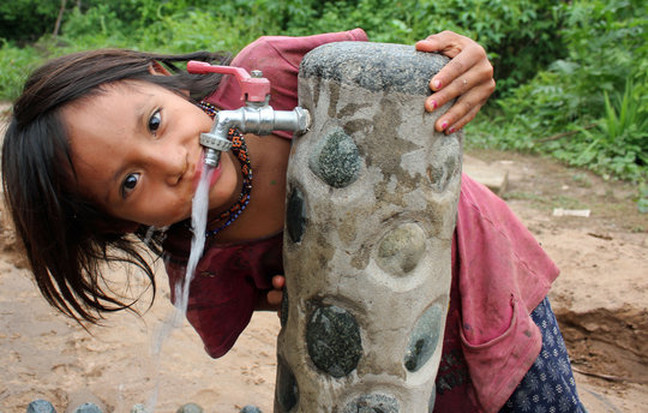Current Research
CIDS Research Projects
NSF Nanosystems Engineering Research Center for Nanotechnology-Enabled Water Treatment (NEWT)
 NEWT is applying nanotechnology to develop transformative and off-grid water treatment systems that both protect human lives and support sustainable economic development.
NEWT is applying nanotechnology to develop transformative and off-grid water treatment systems that both protect human lives and support sustainable economic development.
NEWT is an interdisciplinary, multi-institution nanosystems-engineering research center (headquartered at Rice University) whose goal is to facilitate access to clean water almost anywhere in the world by developing efficient modular water treatment systems that are easy to deploy, and that can tap unconventional sources to provide humanitarian water or emergency response. NEWT also develops systems to treat and reuse challenging industrial wastewaters in remote locations, such as oil and gas fields to help energy production be more sustainable and more cost-efficient in regards to its water footprint.
High-recovery direct potable reuse (DPR)
 In collaboration with EPW, Garver and New Mexico State University, UTEP secured funding from the U.S. Bureau of Reclamation’s Desalination and Water Purification Research (DWPR) program for a multi-year pilot demonstration of high-recovery zero-liquid-discharge direct potable reuse (DPR) at the John T. Hickerson Water Reclamation Facility.
In collaboration with EPW, Garver and New Mexico State University, UTEP secured funding from the U.S. Bureau of Reclamation’s Desalination and Water Purification Research (DWPR) program for a multi-year pilot demonstration of high-recovery zero-liquid-discharge direct potable reuse (DPR) at the John T. Hickerson Water Reclamation Facility.
The research project leverages recently upgraded water treatment piloting containers from the UTEP Center for Inland Desalination Systems (CIDS) which were located on-site at the Hickerson plant and connected to electrical power in the first quarter of 2020. Cloth-filtered and ultraviolet (UV) disinfected effluent from the Hickerson plant is treated with chloramination and ultrafiltration (UF) in the first 40-ft container, and the filtrate is treated with nanofiltration (NF), a UV-peroxide advanced oxidation process (AOP), and granular activated carbon (GAC) in the second 40-ft container. Water is recovered from the NF concentrate with UTEP's Concentrate Enhanced-Recovery Reverse Osmosis (CERRO) process, and the CERRO superconcentrate is treated with an enhanced evaporation process to yield zero-liquid-discharge.
One Water Cluster
 Arid and semi-arid regions of the southwestern U.S. and the world are threatened by dwindling useable water supplies, driven by changing climate, growing and competing demands, and increasing salinity. Much of the U.S./Mexico border region acutely feels these threats and faces a challenging water future that includes increasingly frequent and severe periods of drought, growing demands for water in both the urban and agricultural sectors, surface water overuse, groundwater extraction, and technological challenges in meeting the water treatment needs of the future.
Arid and semi-arid regions of the southwestern U.S. and the world are threatened by dwindling useable water supplies, driven by changing climate, growing and competing demands, and increasing salinity. Much of the U.S./Mexico border region acutely feels these threats and faces a challenging water future that includes increasingly frequent and severe periods of drought, growing demands for water in both the urban and agricultural sectors, surface water overuse, groundwater extraction, and technological challenges in meeting the water treatment needs of the future.
The combined effects of these challenges portend a looming crisis that cannot be addressed adequately through the siloed, piecemeal approach of the past 100 years. A “One Water” approach is called for, one that is holistic, comprehensive, and integrated to meet the challenges of the 21st century. We have assembled a convergent team of engineers, scientists, and stakeholders with a unified understanding of water sectors, problems, and solutions and a shared vision for new technical discoveries with broad societal impact. We will meet the water challenges of our water-scarce region while training the water resource professionals of the future.




